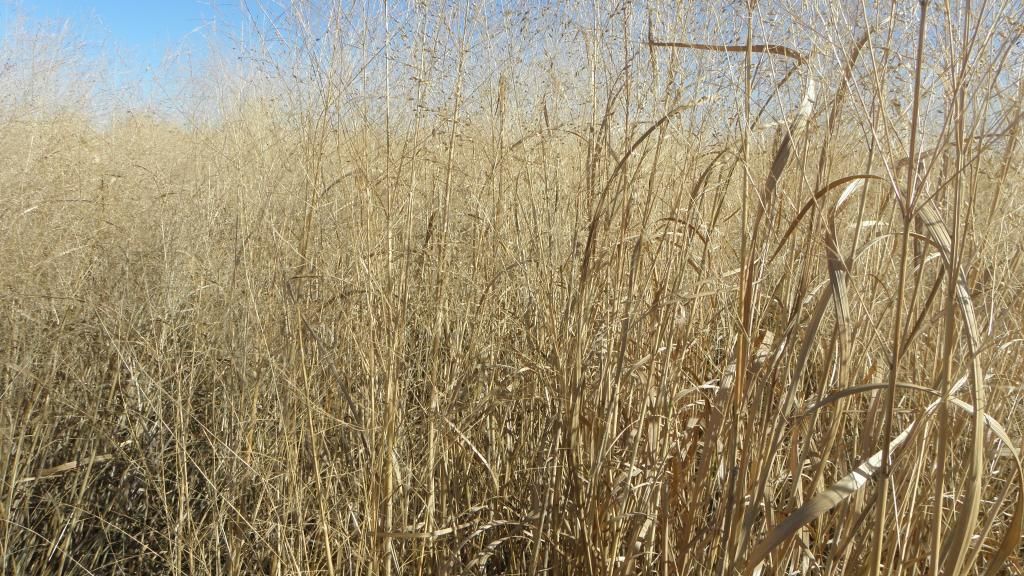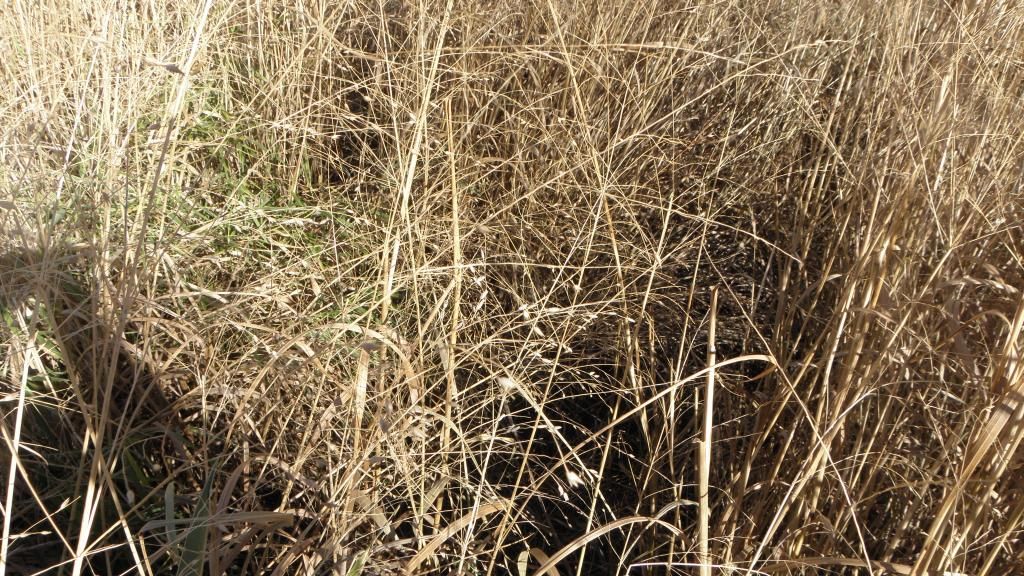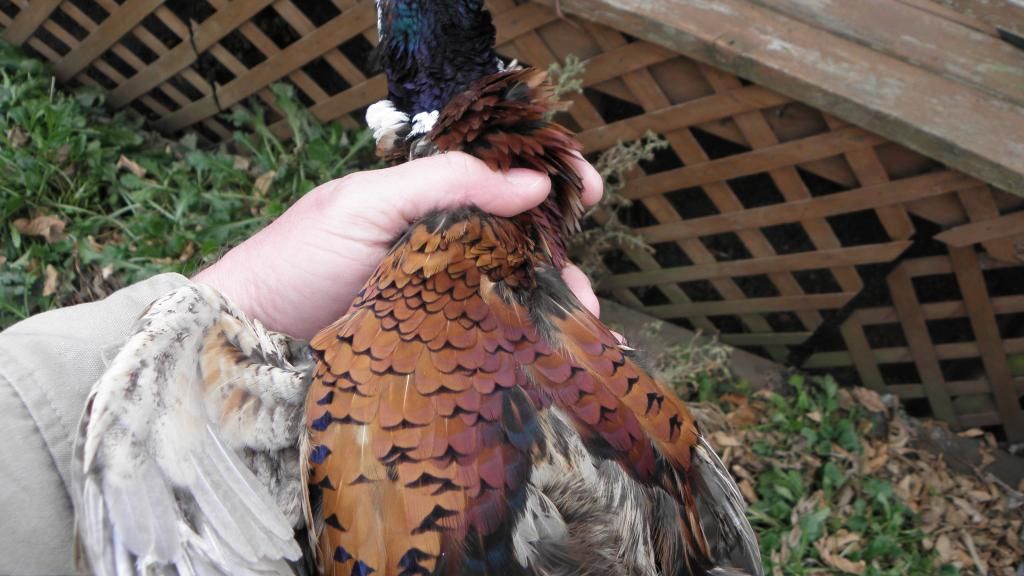KBell
New member
I normally wait until the snow and cold hits to enter the "Grinder". Appropriately named as I planted it and it runs 2685' by 3980'. I gave it the grinder acronym because one needs three things there to be successful:
shoot extremely well
stronger than normal hip and quad muscles--hammies are needed as well!
very good dog work
When Sophie and I began today 5 very long tailed roosters and 3 hens flushed from the fence line into the grinder. I knew from previous experience we wouldn't see those birds again. We didn't.
The grinder


About twenty yard in Sophie had her first point. Here he is:

Another twenty yards or so yielded his twin.
You can see that these are very immature birds for this time of year! Snow in the forecast tomorrow
I left one bird with the landowner--he is a good friend of mine and a crappy shot to boot! so Sophie and I left the field with two.
so Sophie and I left the field with two.
Results--9 roosters--two pointed. 13 hens--7 pointed and one group of 5 huns--pointed. 3 deer--one six point and two does.
Great day for Sophie and myself. She slept on the short drive home and I am on my third crown and coke as I write--not sure I can feel my lower legs.
All in all a great day in the country I love and plenty of action to boot. I will enjoy the sweet flavor of this guy as I dine and remember the efforts it took to bring him to the table.
Ken
shoot extremely well
stronger than normal hip and quad muscles--hammies are needed as well!
very good dog work
When Sophie and I began today 5 very long tailed roosters and 3 hens flushed from the fence line into the grinder. I knew from previous experience we wouldn't see those birds again. We didn't.
The grinder


About twenty yard in Sophie had her first point. Here he is:

Another twenty yards or so yielded his twin.
You can see that these are very immature birds for this time of year! Snow in the forecast tomorrow
I left one bird with the landowner--he is a good friend of mine and a crappy shot to boot!
Results--9 roosters--two pointed. 13 hens--7 pointed and one group of 5 huns--pointed. 3 deer--one six point and two does.
Great day for Sophie and myself. She slept on the short drive home and I am on my third crown and coke as I write--not sure I can feel my lower legs.
All in all a great day in the country I love and plenty of action to boot. I will enjoy the sweet flavor of this guy as I dine and remember the efforts it took to bring him to the table.
Ken
